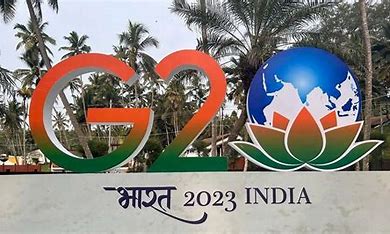India's progress is praised in a World Bank document for the G20
In addition to merely inclusive finance, Digital Public Infrastructure (DPI) has had a profoundly revolutionary effect on India. The World Bank document for the G20 Global Partnership for Financial Inclusion praised the transformative effects of DPIs in India over the previous ten years under the Central Government.
The document emphasises the ground-breaking actions performed by the Central Government and the critical part played by government policy and legislation in influencing the landscape of Digital Public Infrastructure (DPI).
- Financial Inclusion: Lauding India’s DPI approach the World Bank document notes that India has achieved in just 6 years what would have taken about five decades.
- JAM Trinity has propelled financial inclusion rate from 25% in 2008 to over 80% of adults in last 6 years, a journey shortened by up to 47 years thanks to DPIs.
- The document categorically notes, “While DPIs’ role in this leapfrogging is undoubtable, other ecosystem variables and policies that build on the availability of DPIs were critical. These included interventions to create a more enabling legal and regulatory framework, national policies to expand account ownership, and leveraging Aadhaar for identity verification.”
- Since its launch, the number of PMJDY accounts opened tripled from 147.2 million in March 2015 to 462 million by June 2022; women own 56 percent of these accounts, more than 260 million.
- The Jan Dhan Plus programme encourages low-income women to save, resulting in over 12 million women customers (as of April 2023) and a 50% increase in average balances in just five months, as against the entire portfolio in the same time period. It is estimated that by engaging 100 million low-income women in savings activities, public sector banks in India can attract approximately Rs 25,000 crore ($3.1 billion) in deposits.
- Government to Person (G2P) Payments:
- In the last decade, India has built one of the world’s largest digital G2P architectures leveraging DPI.
- This approach has supported transfers amounting to about $361 billion directly to beneficiaries from 53 Central government ministries through 312 key schemes.
- As of March 2022, this had resulted in a total savings of $33 billion, equivalent to nearly 1.14 percent of GDP.
- UPI:
- More than 9.41 billion transactions valuing about Rs 14.89 trillion were transacted in May 2023 alone.
- For the fiscal year 2022–23, the total value of UPI transaction was nearly 50 percent of India’s nominal GDP.
- DPIs’ Potential Added Value for the Private Sector:
- The DPI in India has also enhanced efficiency for private organizations through reductions in the complexity, the cost and the time taken for business operations in India.
- Even some NBFCs have been enabled 8% higher conversion rate in SME lending, a 65% savings in depreciation costs and 66% reduction in costs related to fraud detection.
- According to industry estimates, banks’ costs of onboarding customers in India decreased from $23 to $0.1 with the use of DPI.
- Lower Cost of Compliance for Banks for KYC
- India Stack has digitised and simplified KYC procedures, lowering costs; banks that use e-KYC lowered their cost of compliance from $0.12 to $0.06. The decrease in costs made lower-income clients more attractive to service and generated profits to develop new products.
- Cross-Border Payments:
- The UPI-PayNow interlinking between India and Singapore, operationalised in February 2023, aligns with G20's financial inclusion priorities and facilitates faster, cheaper, and more transparent cross-border payments.
- Account Aggregator (AA) Framework:
- India’s Account Aggregator (AA) Framework aims to strengthen India’s data infrastructure, enabling consumers and enterprises to share their data only with their consent through an electronic consent framework. The framework is regulated by RBI.
- Total of 1.13 billion cumulative accounts are enabled for data sharing, with 13.46 million cumulative number of consents raised in June 2023.
- Data Empowerment and Protection Architecture (DEPA):
- India's DEPA grants individuals’ control over their data, enabling them to share it across providers. This promotes tailored product and service access without requiring new entrants to invest heavily in pre-existing client relationships, fostering innovation and competition.


